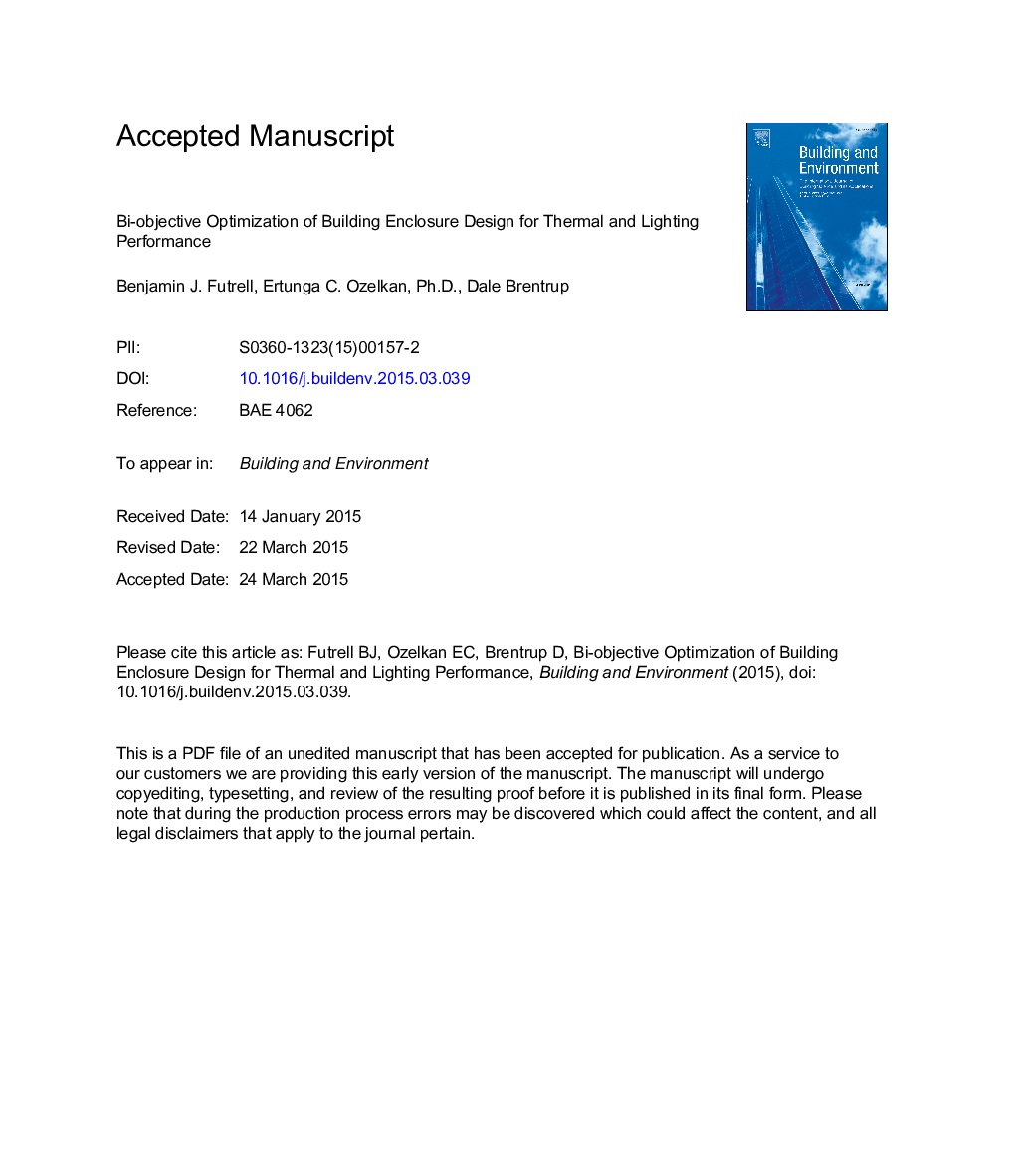| Article ID | Journal | Published Year | Pages | File Type |
|---|---|---|---|---|
| 6699850 | Building and Environment | 2015 | 24 Pages |
Abstract
We address the challenging problem of optimizing early building design for daylighting and thermal performance with the objectives of passively satisfying occupant thermal and luminous needs, to the greatest degree possible, therefore minimizing energy demand for heating, cooling, and lighting. A bi-objective optimization method using GenOpt and its implementation of a Hooke Jeeves and Particle Swarm Optimization algorithm is demonstrated that investigates how building enclosure design influences the above objectives. Thermal performance was evaluated by how heat transfer across enclosure elements impacts hourly heating and cooling loads. Lighting performance was evaluated based on the frequency and magnitude at which daylight levels, during occupied hours, deviate from a desired target illuminance range. A single-zone classroom design in Charlotte, NC was optimized for north, south, east, and west orientations. For each orientation, a Pareto front was approximated to help evaluate trade-offs between thermal and daylighting objectives. Results show that for the south, east, and west orientations, thermal and daylighting objectives are not in strong conflict, however, for the north orientation there is a more marked conflict between these objectives.
Related Topics
Physical Sciences and Engineering
Energy
Renewable Energy, Sustainability and the Environment
Authors
Benjamin J. Futrell, Ertunga C. Ozelkan, Dale Brentrup,
